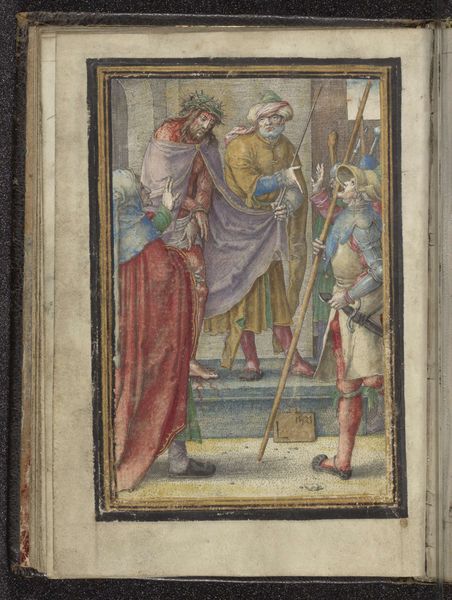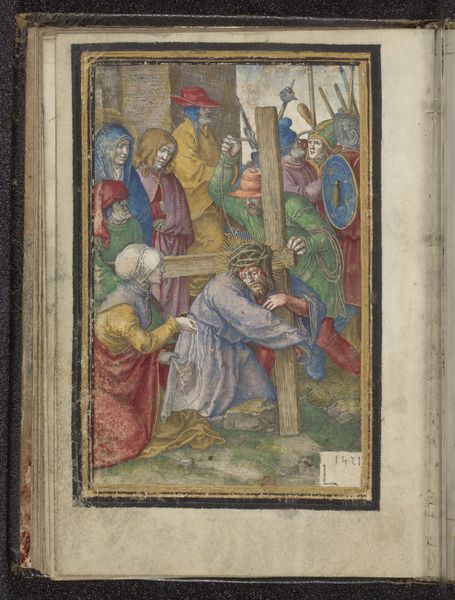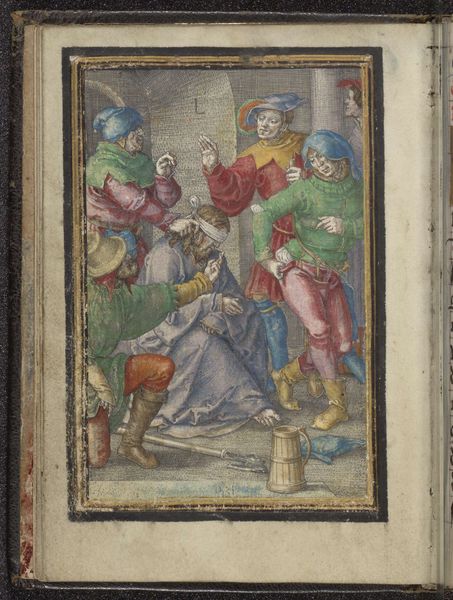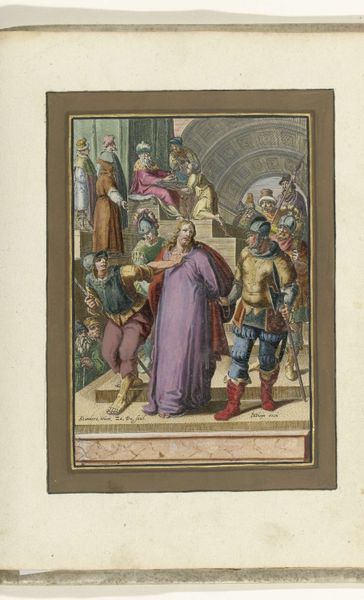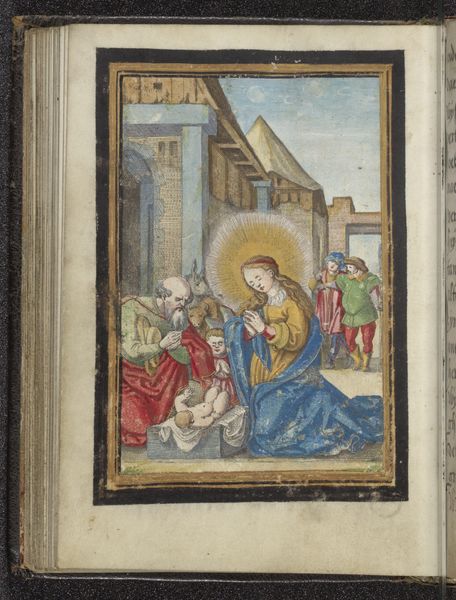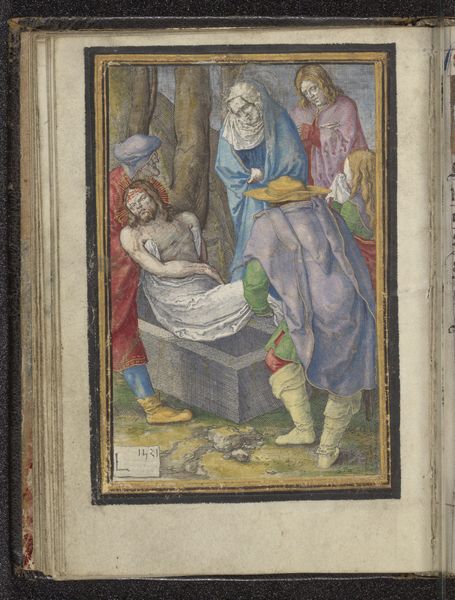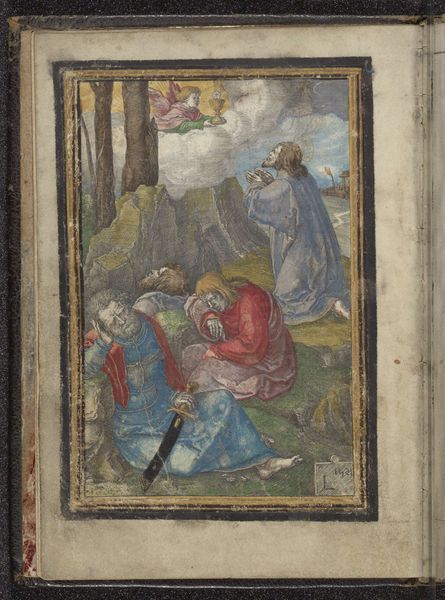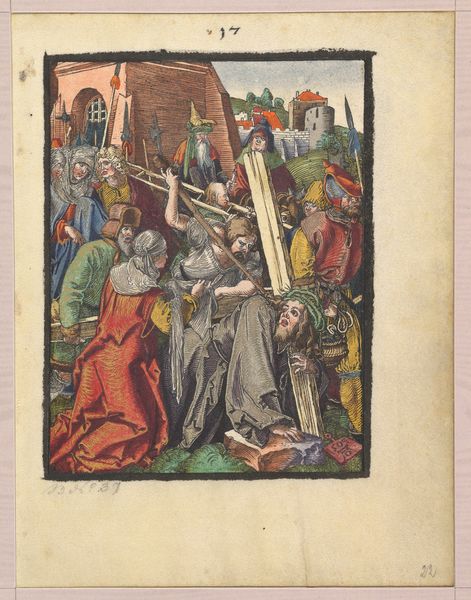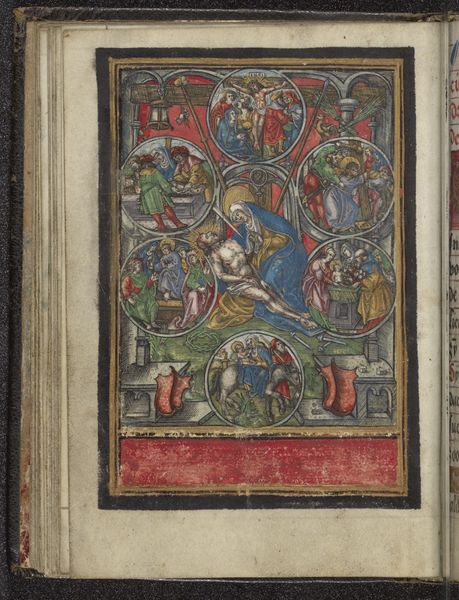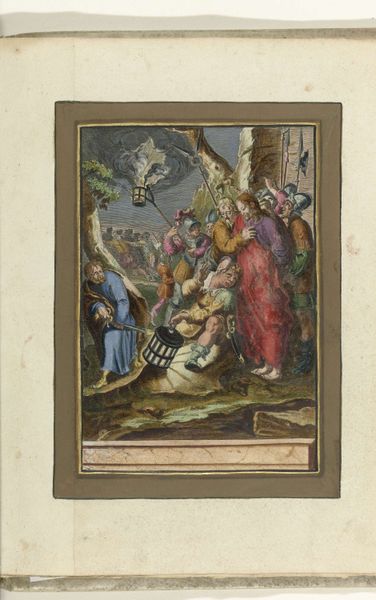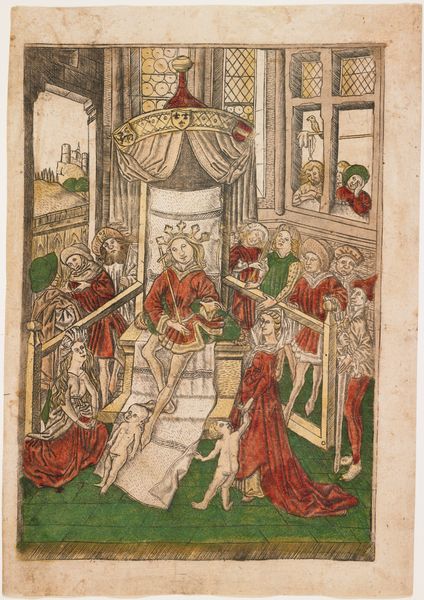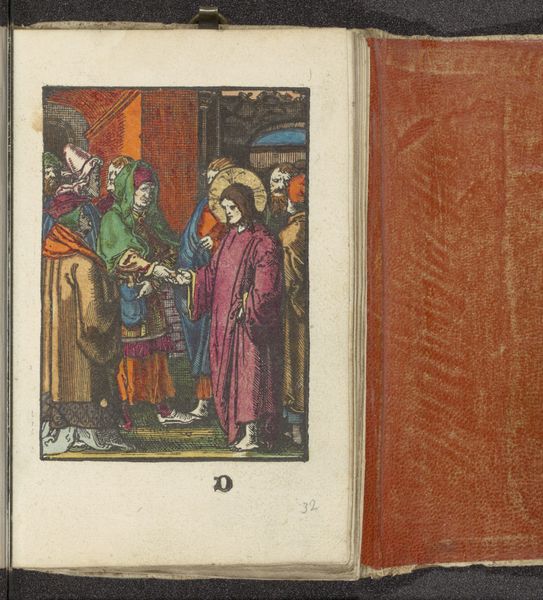
tempera, painting
#
tempera
#
painting
#
figuration
#
coloured pencil
#
history-painting
#
italian-renaissance
#
early-renaissance
#
miniature
Dimensions: height 149 mm, width 105 mm
Copyright: Rijks Museum: Open Domain
Editor: This tempera painting, "Mis van Gregorius," created between 1497 and 1552 by Frans Crabbe van Espleghem, has such a mystical quality. The kneeling figure against the vision of Christ strikes me as both reverent and unsettling. How do you interpret the symbolic weight of this scene? Curator: The scene vibrates with centuries of theological and cultural memory. Consider the ladder, for example: ladders often function as conduits to the divine; think Jacob’s Ladder or the Descent from the Cross. How does its presence impact your understanding of the space between earthly supplication and divine revelation here? Editor: That’s fascinating! I hadn’t considered the ladder in that context. I guess it does create a kind of bridge or connection, reinforcing the idea of direct communication with the divine. Does the artist use colour symbolically as well? Curator: Absolutely! Note the gold, traditionally representative of holiness, encircling both Christ and the kneeling priest. How might the artist be suggesting a mirrored sanctity? Consider too the wounds of Christ – these aren't just physical depictions of the Passion, but powerful emblems that have resonated across generations, carrying narratives of sacrifice, redemption, and divine suffering. Editor: It's amazing how much visual language is packed into one miniature. Seeing the symbolism really enriches the narrative! Curator: Indeed. Recognizing such symbols embedded within artworks, allows us to access layers of meaning – continuities of thought and feeling expressed visually. Editor: Thanks for revealing these continuities and helping me to think more deeply about Frans Crabbe van Espleghem's painting. Curator: My pleasure. The ability to ‘read’ these images invites one into an ongoing conversation with the past.
Comments
No comments
Be the first to comment and join the conversation on the ultimate creative platform.
